Every child deserves to be safe at home, in their communities, and at school. However, findings from the Violence Against Children and Youth Surveys (VACS) show that across the globe, children and youth experience unacceptably high rates of physical, sexual, and psychological violence, including in school settings and often driven by harmful gender norms and stereotypes. Experiences of violence have wide-ranging consequences for children’s physical, social, and emotional well-being, school performance and attendance, and likelihood of experiencing or perpetrating future violence.
But it doesn’t have to be this way. While the data is daunting, proven solutions to prevent school-related violence exist. Investing in schools and teachers, who are uniquely placed to guide students and lead critical social change to prevent violence, is key to unlocking these solutions.
School-Related Gender-Based Violence (SRGBV) is defined as any act or threat of sexual, physical or psychological violence occurring in and around schools, perpetrated as a result of gender norms and stereotypes, and enforced by unequal power dynamics. SRGBV can include teacher-perpetrated violence, such as corporal punishment or sexual coercion. It can also include peer-perpetrated violence, like bullying. For more information, visit togetherforgirls.org/schools.
Corporal punishment and peer-to-peer violence in and around schools are common, with higher rates of perpetration among male teachers and students
Data can provide key insights to address school-related gender-based violence (SRGBV). In partnership with Global Affairs Canada, USAID’s Higher Education Support Network (HESN), the U.S.Centers for Disease Control and AidData, Together for Girls has undertaken secondary analyses of eleven VACS to understand the prevalence of physical and sexual violence in and around schools, including specific types of violence in school settings such as peer violence and corporal punishment, as well as details on violence perpetration, victimization risk and post-violence behaviors in selected countries. The VACS are led by the CDC as part of the Together for Girls partnership.
Experiences of corporal punishment vary widely across countries, from one percent or less of male and female students in Colombia, El Salvador, and Honduras, to one-third of females and almost half of males in Uganda. Students consistently reported higher perpetration of corporal punishment by male teachers compared with female teachers. Students reported consequences ranging from physical injury to mental health issues to school absenteeism.
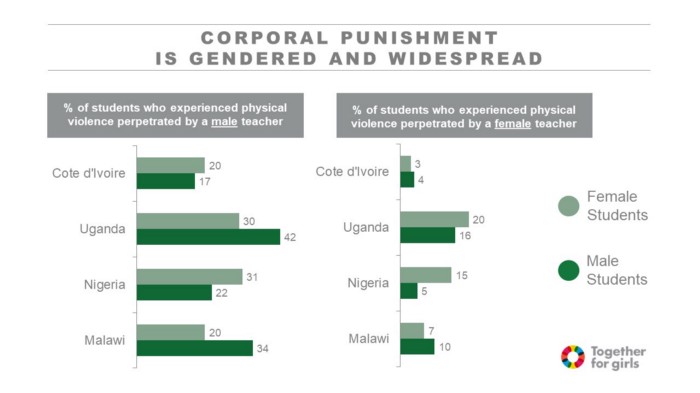
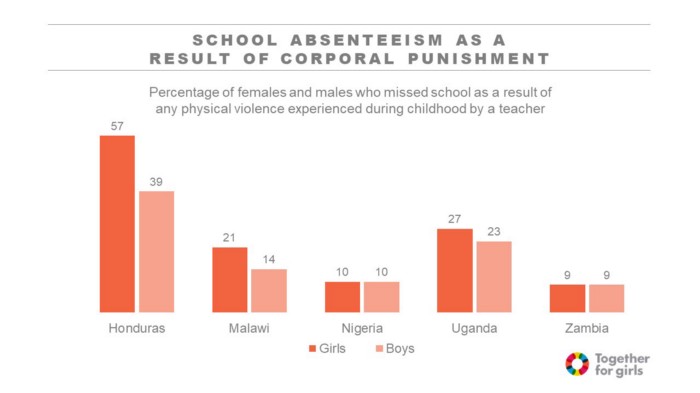
In some countries, peer violence is much more common than corporal punishment or other forms of violence perpetrated by teachers, and male students are both more likely to perpetrate violence, and to experience it at the hands of a male peer.
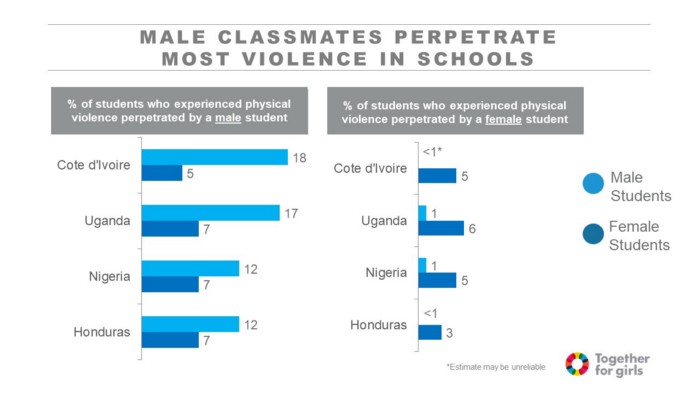
Violence in school settings is more prevalent in countries where a larger proportion of young people condone harmful gender norms and attitudes. Notably, an analysis of VACS data from several countries found that acceptance of intimate partner violence is less common among males and females who currently attend or completed secondary school, compared with those who completed primary school or less.
Teachers and school administrators can play an important role in shifting norms around violence in and around school
Schools can serve as protective spaces for children, acting as an important arena for broader social change to end violence both in and around the classroom. Teachers, adminstrators, and teacher unions have a critical role to play in creating safe learning environments and changing social norms around the acceptability of violence and addressing harmful gender stereotypes that are often the root cause for violence and related discrimination.
One example of a promising approach to engage teachers as change agents is a project in Côte d’Ivoire. Graines de Paix, with support from Together for Girls, Global Affairs Canada, and UNICEF, is scaling up a project titled Apprendre en Paix, Éduquer sans Violence (Learning in Peace and Educating Without Violence). Through APEV, teachers in schools across Côte d’Ivoire are learning non-violent, alternative classroom management techniques.
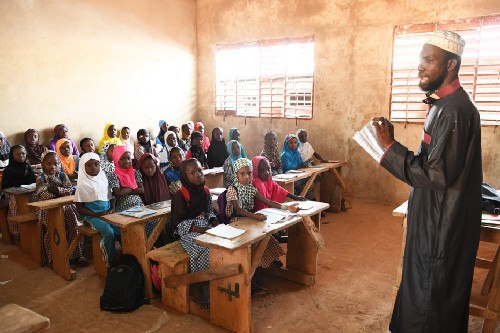
APEV was first implemented from 2012 to 2017, with four-day training workshops on classroom management techniques delivered to 320 “teacher counselors” who then delivered two-day trainings to colleagues, reaching 23,497 pre-school and primary school teachers. The training sought to build the capacity of teachers to transition their teaching styles away from harsh and violent discipline to an approach that creates a safe and positive learning environment for students.
Graines de Paix partnered with the Child Protection Research Group at the London School of Hygiene and Tropical Medicine to conduct an initial evaluation of APEV of 160 teachers’ attitudes and behavior. Results demonstrated that participation in the APEV training is an effective strategy to reduce the acceptability and use of violence among teachers.
Male teacher, September 2018
Another effective intervention that empowers teachers as change agents is Raising Voices’ Good School Toolkit, developed to help educators understand and create a ‘good school’ environment. The Toolkit has four interrelated objectives that address: development of a collective vision for the school; creation of a nurturing learning environment; implementation of a more progressive learning methodology; and strengthening school governance. The Toolkit contains six systematic and child-friendly steps for creating growth and change in the school environment, enabling sustainable and natural change.
Raising Voices worked with the London School of Hygiene and Tropical Medicine to investigate intervention effects in Uganda on the school culture and norms and attitudes on violence against children from caregivers outside of school. The study observed a host of positive outcomes including: students’ greater identification with their school and perceived emotional support for teachers and peers, as well as lower acceptance among students and staff, of physical discipline practices and greater perceived involvement in school.
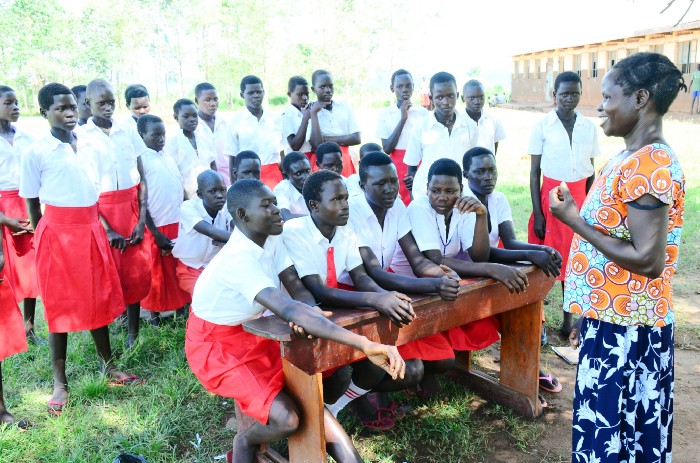
Initial evaluations of both the APEV and Good School Toolkit demonstrate that teachers have the potential and willingness to lead change toward more positive, safer school environments. Equipping teachers with the tools to engage in positive classroom management techniques and embrace non-violence can have a transformational impact on schools and learners.
The COVID-19 pandemic and its social and economic consequences have impacted students, girls, and women in uniquely challenging ways, including both observed and predicted setbacks for gender equality, such as early pregnancy, school abandonment, and child early and forced marriage. Now more than ever, schools — and teachers who are in a unique position to support students and address the norms and attitudes that shape their lives — must be recognized as a critical vehicle for social change, and receive the investments necessary to provide not just quality but transformational educational experiences to all learners.
About Together for Girls
Together for Girls is a global public-private partnership that works to end violence against boys and girls, with a special focus on ending sexual violence against girls. Founded in 2009, the Together for Girls partnership brings together national governments, UN entities and private sector organizations to prevent and respond to violence. To do this, the partnership uses a three-pronged model: data, action, and advocacy to promote evidence-based solutions, galvanize coordinated response across sectors, and raise awareness. Currently, Together for Girls works with more than 20 countries around the world. To learn more, visit www.togetherforgirls.org.
For more information about Together for Girls’s work on SRGBV, visit: togetherforgirls.org/schools/.

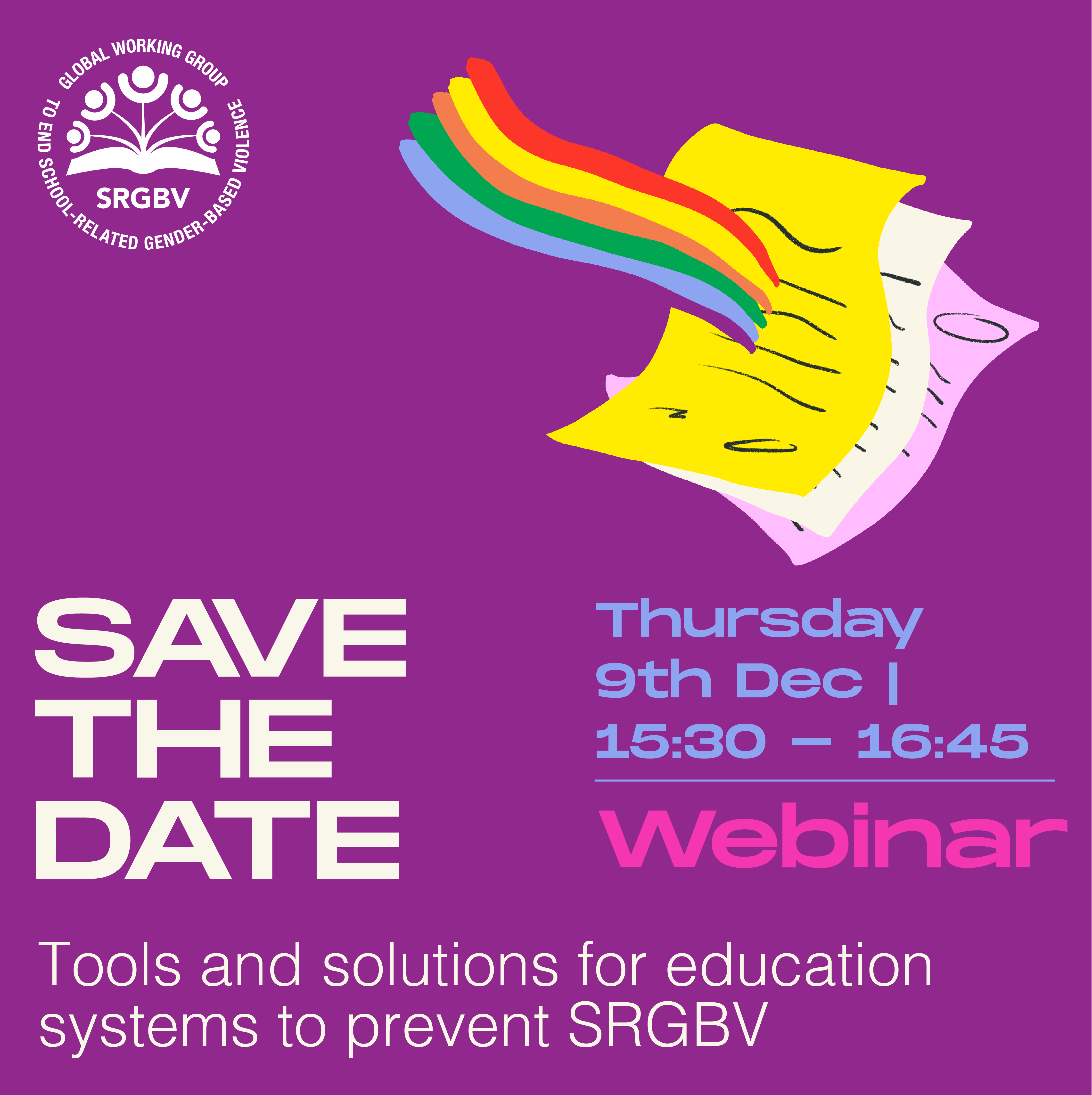
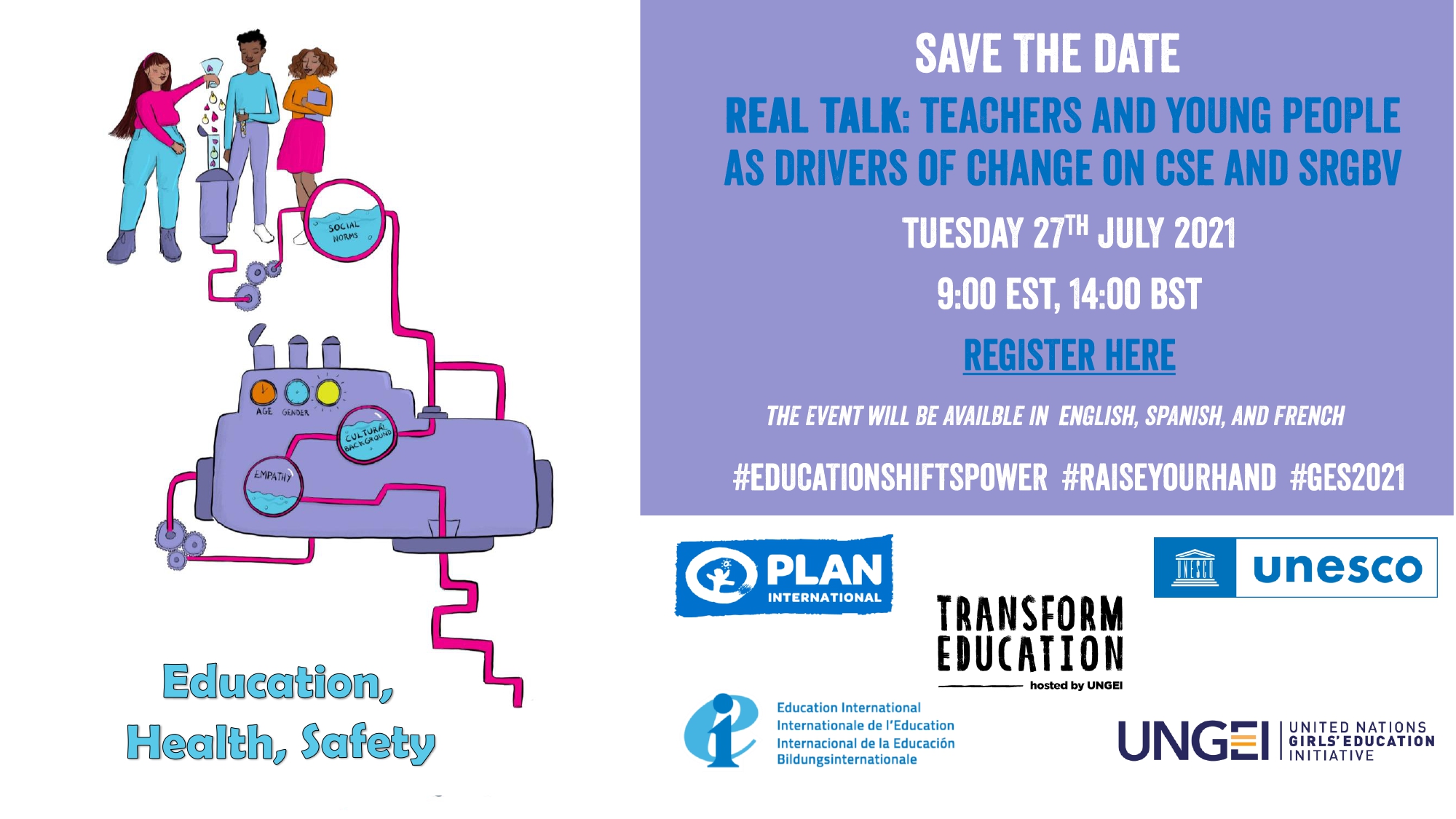
 English
English العربية
العربية Български
Български Hrvatski
Hrvatski Čeština
Čeština Dansk
Dansk Nederlands
Nederlands Suomi
Suomi Français
Français Deutsch
Deutsch Ελληνικά
Ελληνικά हिन्दी
हिन्दी Italiano
Italiano Română
Română Русский
Русский Español
Español Maltese
Maltese Zulu
Zulu አማርኛ
አማርኛ